Gray hair is a normal part of the natural aging process. I know it’s not what most people want to hear, but more likely than not, at some point in your life, your hair will start to go gray – and often without warning.
Unfortunately, for some people, these gray strands appear a little too early.
This is called premature graying of hair (PGH), and it’s a real thing.
RELATED: Mom Decides to Grow Out Her Gray Hair at Age 37. Her Husband Wants Her to Go Back to the Dye
I know that might’ve just unlocked a new fear in you that didn’t exist before, but don’t panic. This is 2024, after all, and there are plenty of ways to either hide or embrace your ‘salt and pepper’ look. But before we get into your options, let’s first make sure we understand what this condition is and where it comes from.
What is Gray Hair & Where Does it Come From?

Everyone’s hair has color, and that color is determined by melanin – but what does that mean, exactly?
Melanin is a natural pigment produced by melanocytes in the skin, hair, and eyes. There are two primary types of melanin found in hair follicles – eumelanin and pheomelanin – and they determine hair color.
Those with dark hair (brown or black) produce high amounts of eumelanin, those with lighter hair (blonde) produce low amounts of eumelanin, and those with red hair produce high amounts of pheomelanin.
So, where does gray hair come from?
As we age, the number of melanocytes in each hair follicle starts to decline, which results in a decrease in cell activity and melanin production. This gradual decline is the natural aging process taking its course.
Hair starts losing its color when it starts losing melanin. Gray hair is characterized by a lack of melanin, while white hair is characterized by a complete loss of melanin – believe it or not, there is a difference!
On average, melanin production declines 10% every decade after you turn 30. By age 50, half of men and women will have at least 50 percent gray hair. Most people can expect to see gray hairs starting at 35.
What Causes Premature Graying of Hair?
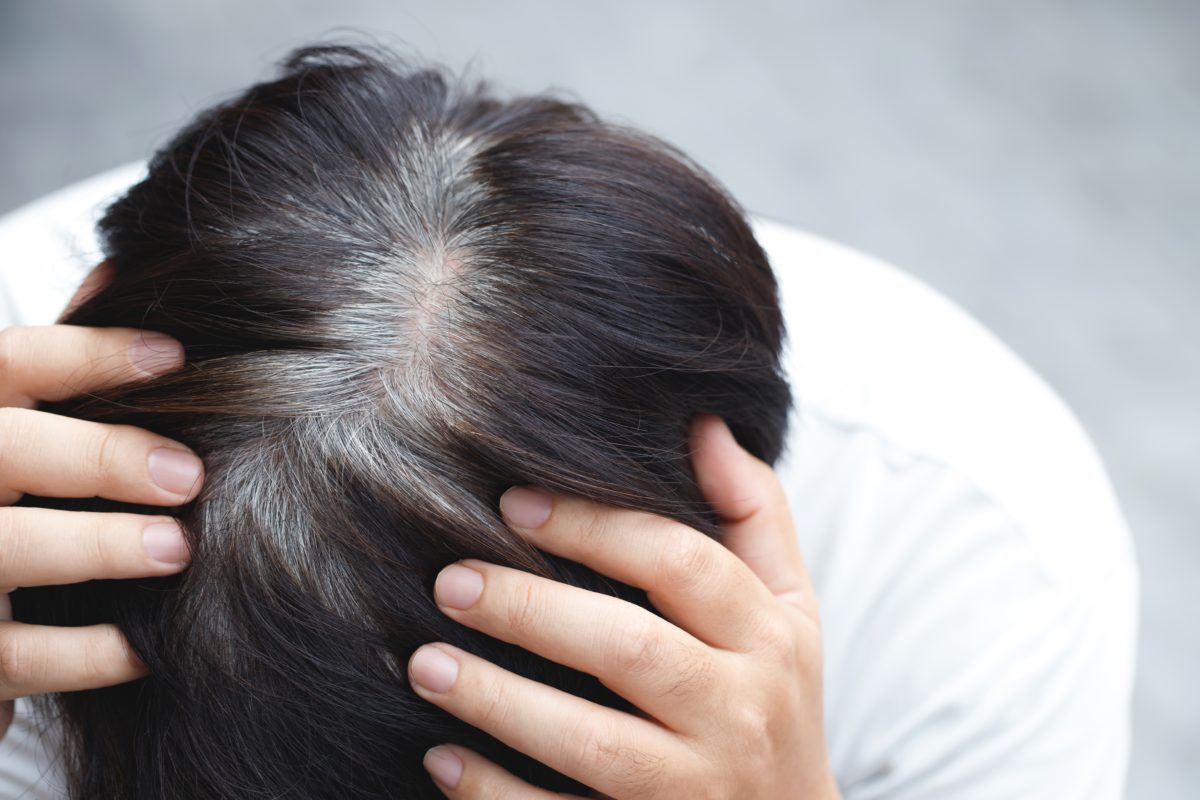
Alright, now that we understand where gray hair comes from, let’s talk about premature graying of hair.
Anderson Cooper is a perfect example of what PGH looks like. While he’s 56 years old today and would likely have gray hair by now anyway, he has sported gray hair for more than three decades – involuntarily!
In a 2019 interview with WIRED, Cooper explained how he started going white at the age of 21 and had full-on salt-and-pepper hair by the age of 30. He later admitted to not liking his iconic silver hairstyle.
“I don’t really like my gray hair. I wish I still had brown hair,” he said on Live! With Kelly in 2016. “People used to say to me I’m prematurely gray, but that doesn’t happen anymore. I’ve caught up with myself.”
And he isn’t the only one! In that same interview, host Kelly Ripa admitted to noticing gray hairs at 27. “I was 27 and just gave birth to my first child and literally woke up with a gray streak of hair,” she said.
So, what causes premature graying of hair?
PGH can be caused by a variety of factors – including oxidative stress, hormonal changes, vitamin deficiencies, poor lifestyle habits, and genetics. Don’t worry, we’ll explain each one in more detail below!
5. Oxidative Stress

We all know that the natural aging process results in a decrease in melanin production, but that process can be accelerated – resulting in premature graying of hair – through something known as oxidative stress.
To understand oxidative stress, you must understand what free radicals and antioxidants are.
Free radicals are oxygen-containing molecules with an uneven number of electrons, which allows them to easily react with other molecules. These reactions are known as oxidation and they play a significant role in the health and function of the human body, but too many free radicals in the body can cause problems.
That’s where antioxidants come into play. Antioxidants are molecules that can donate an electron to a free radical without becoming destabilized themselves, thereby neutralizing the free radical’s reactivity.
Oxidative stress occurs when the body has more free radicals than antioxidants. This imbalance is what accelerates the natural aging process, resulting in premature graying of hair, wrinkles, and other signs of aging.
4. Hormonal Changes
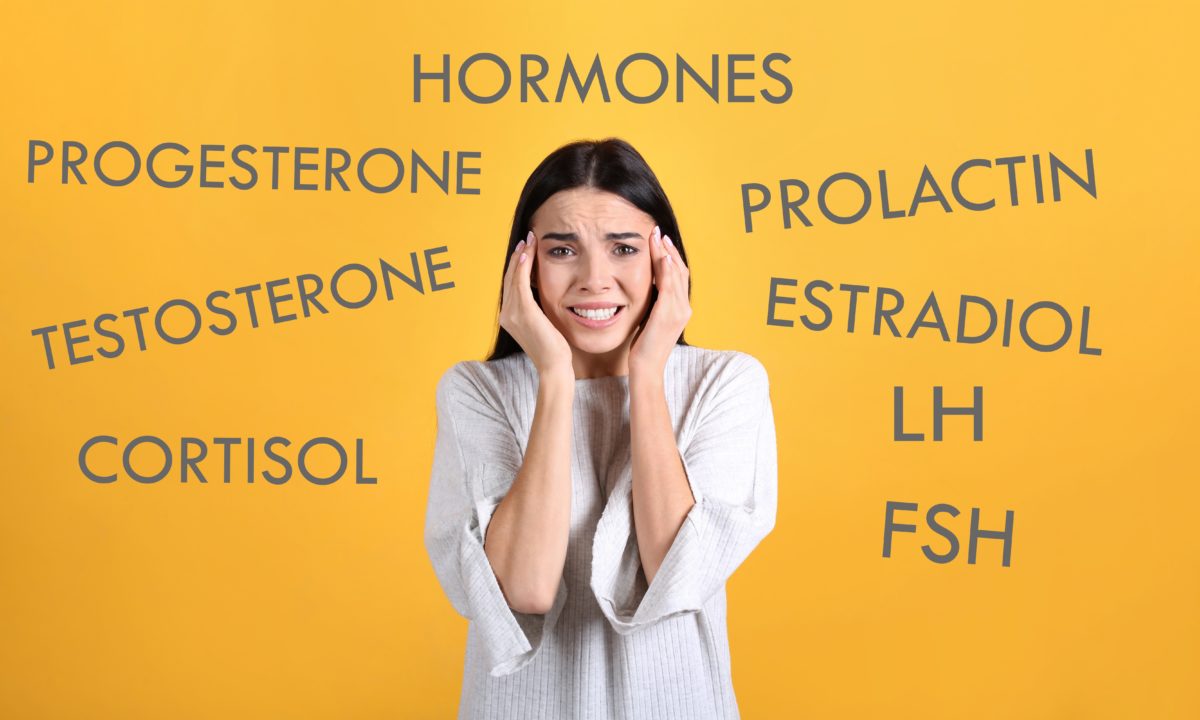
Believe it or not, hormones can directly impact the color of your hair, as well as its density, quality, and growth. The hormones most at play here are sex hormones, stress hormones, and thyroid hormones.
Sex hormones. The primary sex hormones are estrogen and progesterone (women) and testosterone (men). A decrease in sex hormones has been linked to a decrease in melanin production.
Stress hormones. Cortisol is the primary stress hormone, and it can have a lasting impact on the color of your hair. Higher levels of cortisol are often linked to a decrease in melanocyte function.
Thyroid hormones. The two primary thyroid hormones are called thyroxine (T4) and triiodothyronine (T3). Too much (hyperthyroidism) or too little (hypothyroidism) can cause melanocytes to lose their function.
“All hair is different and hormones affect everyone differently, but they can certainly impact the colour of both dyed and natural hair,” says Siobhan Jones, Creative Director at Blush and Blow London.
3. Vitamin Deficiencies

Certain vitamins and nutrients play a crucial role in maintaining the health and pigmentation of hair. Here are some of the key vitamins and nutrients whose deficiencies might contribute to premature graying of hair:
Vitamin B12. Also known as cobalamin, Vitamin B12 is essential for DNA production, metabolism, and energy levels, and can be found in fish, red meat, dairy, poultry, eggs, and fortified breakfast cereals.
Vitamin D. A fat-soluble vitamin that is found in small amounts in oily fish, liver, red meat, egg yolk, and some fortified foods (such as milk), but our main source of Vitamin D comes from sunlight exposure.
If your diet lacks these essential nutrients, it might be helpful to discuss this with a healthcare provider. Based on your specific health needs, the provider can recommend dietary adjustments or supplements.
2. Poor Lifestyle Habits
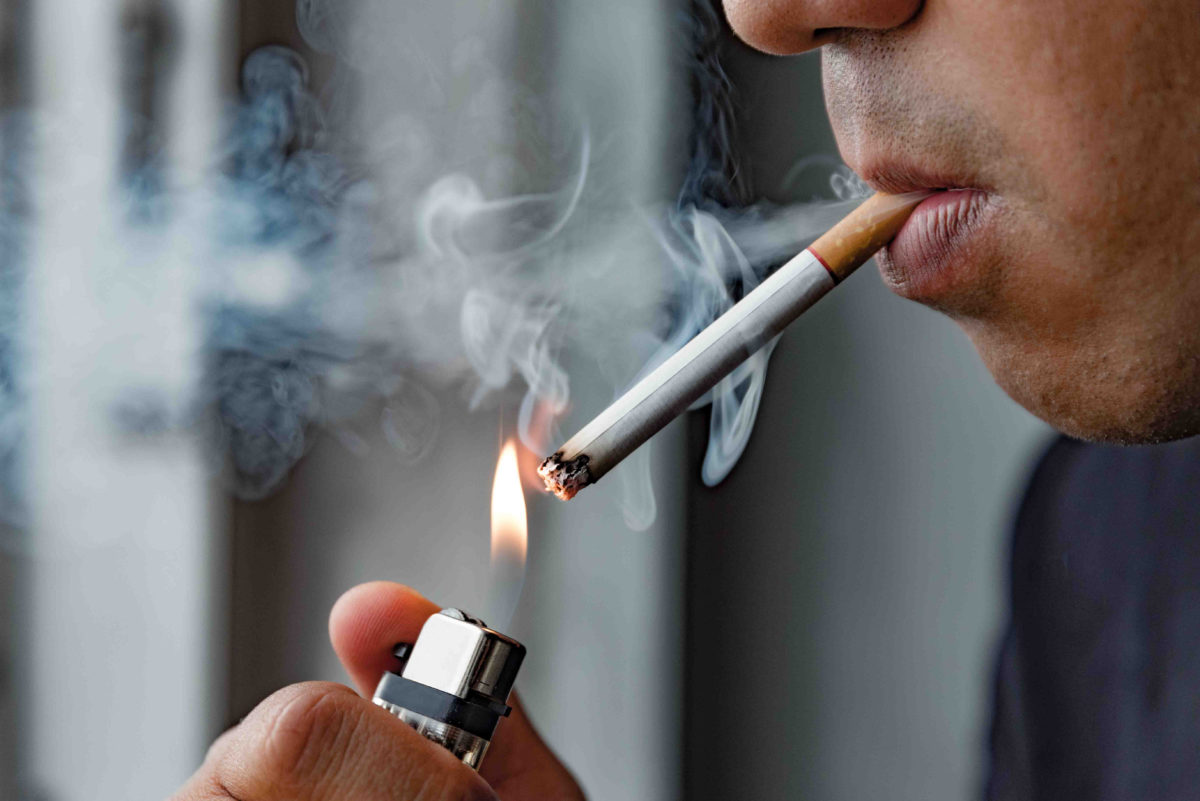
Living a healthy lifestyle and adopting positive daily habits are essential to your overall health and well-being – and the same goes for the color of your hair. Here are some of the biggest culprits:
Smoking. The harmful chemicals in tobacco smoke can damage hair follicles, impair blood circulation to the scalp, and increase oxidative stress, which can cause hair to turn gray before you’re ready for it to.
Stress. Affects the hormones in the body, which can impact the functioning of melanocytes and reduce the production of melanin. It can also deplete stem cells in the hair follicle, which are crucial for hair color.
Alcohol. High alcohol intake can negatively affect the absorption of vitamins and minerals, which are essential for healthy hair pigmentation. It can also cause dehydration, which can impact hair health.
Sleep. Insufficient sleep can lead to increased stress and hormonal imbalances, both of which might affect hair pigmentation over time. Make sure you’re getting eight hours of quality sleep each night.
Addressing these lifestyle factors and making the necessary changes in one’s life can delay the onset of graying and improve overall health, allowing one to feel comfortable and confident in one’s own skin.
1. Genetics
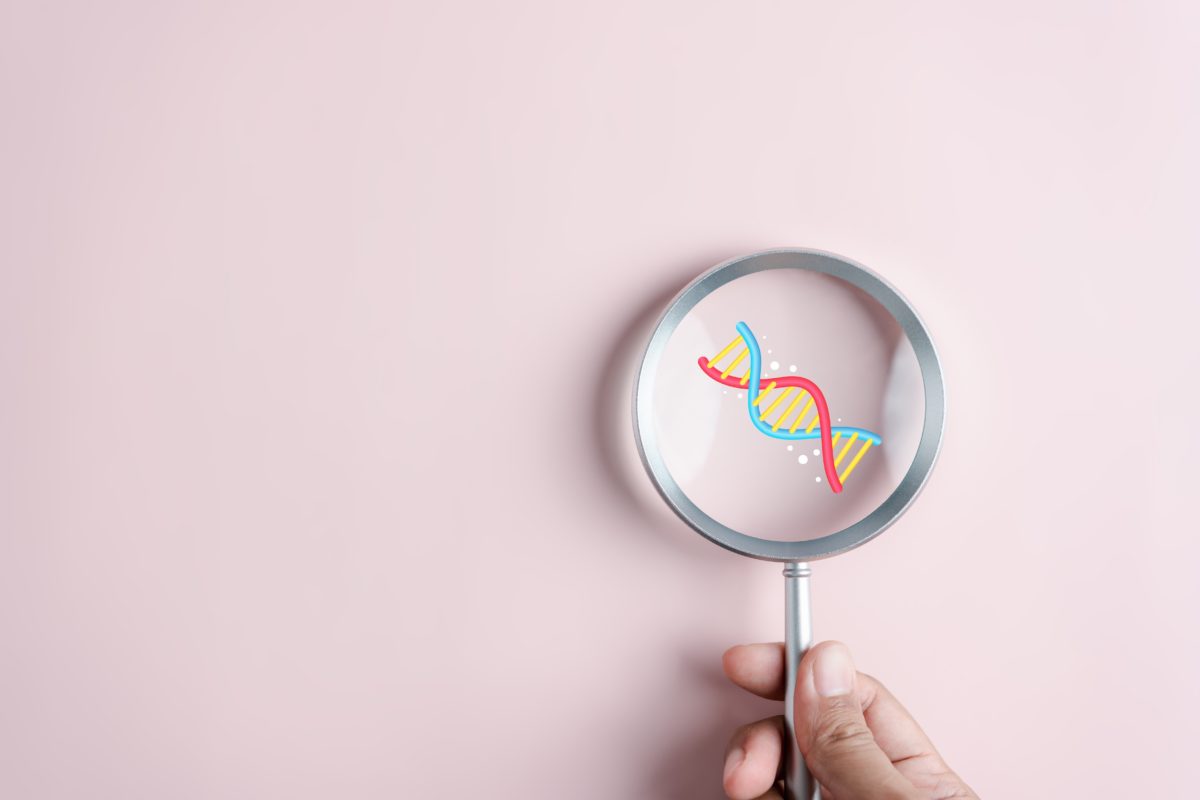
While lifestyle and environmental factors can influence the onset and progression of gray hair, genetics is the most determining factor, setting the basic limits and timeline for when graying begins and progresses.
If your parents or grandparents experienced gray hair at an early age, then you’re likely to as well.
One of the most prominent genes involved in premature graying of hair is Interferon regulatory factor 4 (IRF4). Variations in this gene and others can lead to a loss of hair color at a younger age than expected.
Rejecting the Gray: How to Change Your Hair Color

Anderson Cooper and Kelly Ripa aren’t the only two who started seeing gray hairs a little too early.
In fact, one of our anonymous readers encountered a similar problem, albeit a little later in life. “Okay I’m freaking LOL IM 29 and starting to find gray hair,” they wrote in our Answers by Mamas Uncut forum.
And they received quite a response from all of our mama experts out there.
Most people suggested she color it. “I’ve had them since 16… lol just color your hair worked for me…,” one mother wrote in response, while another one said, “It’s your genetics. All you can do is dye it.”
Other ways people with PGH can hide gray hair include highlights, lowlights, hair products, supplements, wigs, hair toppers, and various other home remedies – all of which we’ll explain in further detail below!
5. Hair Dye & Color Treatments
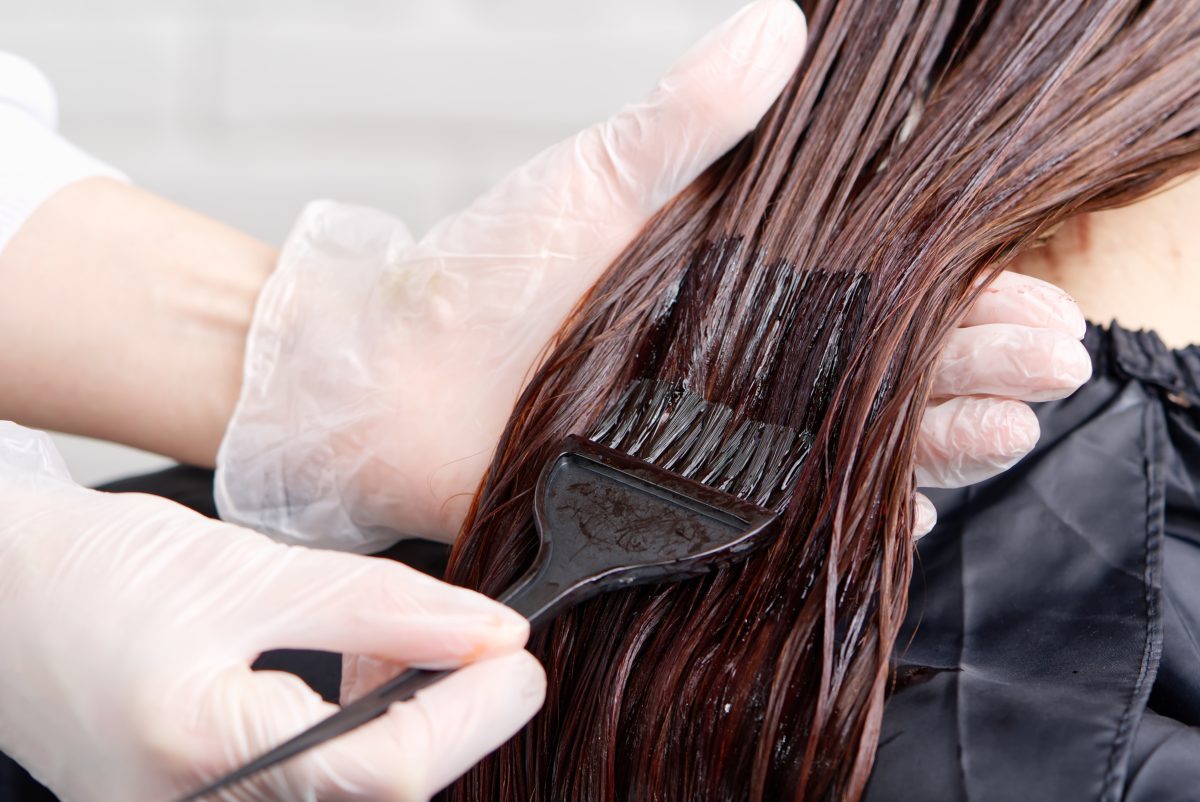
Hair dye and hair color treatments are perhaps the best way to hide premature graying of hair, but they do so in different ways – hair dye changes the color from the inside while coloring changes it from the outside.
Hair dyes are generally grouped into one of three categories – temporary dyes, semi-permanent dyes, and permanent dyes – depending on how long you want the color to last. Temporary dyes will be washed out with shampoo after a couple of weeks, while permanent dyes can last anywhere from 6 to 12 weeks.
It’s important to note that chemical hair dyes can damage hair, particularly if used frequently or improperly.
Visiting a professional colorist or stylist can provide the best (and safest) results for covering premature graying of hair, as they can expertly match the dye to your natural hair color and ensure an even application.
4. Highlights & Lowlights
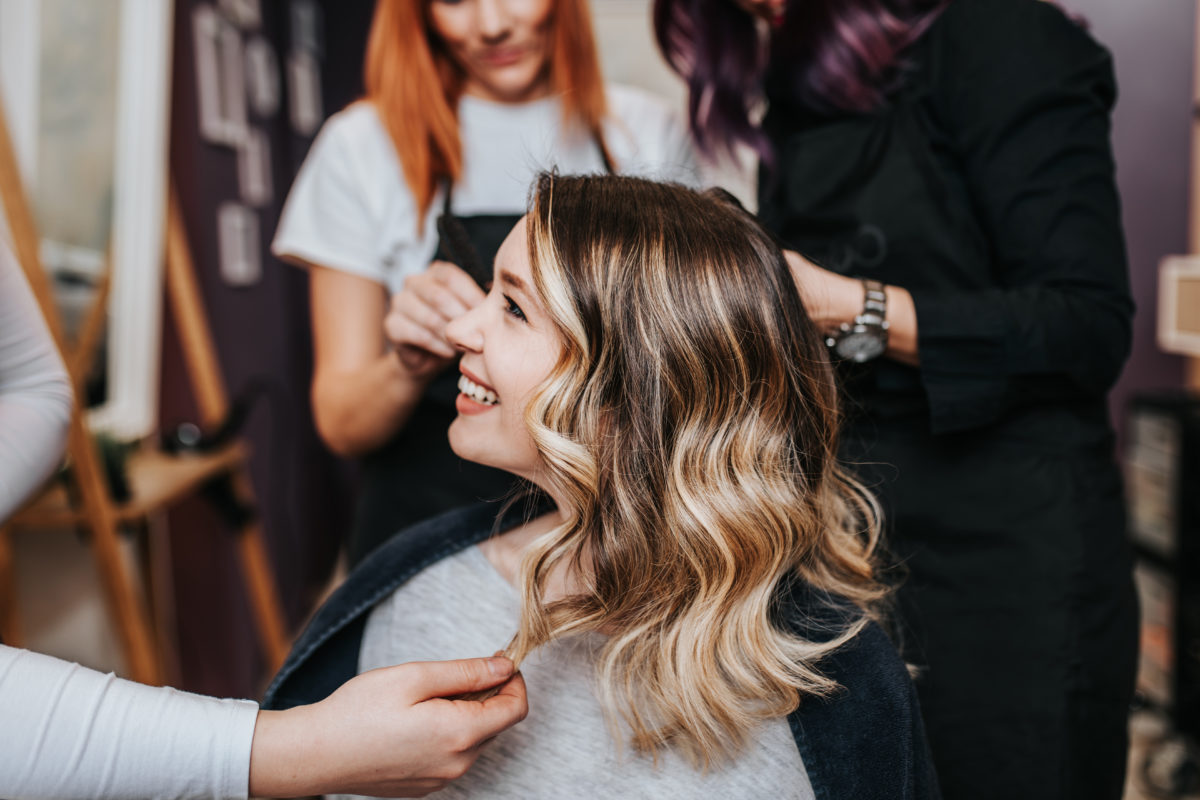
This coloring technique blends the gray with the rest of your hair, creating a more natural and less uniform appearance that can be more aesthetically pleasing than solid color treatments. Here’s what to expect:
Highlights. This involves blending lighter strands of hair with the already-present gray hairs. By mixing it with lighter tones, you can give your hair a sun-kissed, vibrant effect – making the grays less noticeable.
Lowlights. This technique applies darker colors to strands of hair and is best reserved for those with dark hair. Lowlights help in creating a richer, more varied hair tone, which can effectively camouflage the grays.
Many stylists recommend a combination of both highlights and lowlights for a more natural look. This strategy allows for a balance of color that mimics the different shades found in naturally colored hair.
3. Hair Products & Supplements

If you don’t feel like scheduling an appointment with a professional hair stylist, you can always hide those gray hairs with some quality hair products and supplements – allowing you to restore your hair at home.
Here are some of the most popular options:
Root Cover-Up Sprays. A temporary hair color spray that instantly conceals grays or unwanted root re-growth on colored. You can spray it on your hair in the morning and wash it out before going to bed.
Root Touch-Up Pens. Also known as hair mascara, root touch-up pens are best reserved for those who only have a few gray hairs to cover up. They also make for perfect on-the-go hair color solutions.
Shampoos and Conditioners. Some shampoos and conditioners contain pigments, color-depositing agents, and reflective materials that help in toning down the gray or blending it into your natural hair color.
Always perform a patch test at least 48 hours before applying new products to your hair for the first time, and make sure you follow the directions listed on the packaging carefully – they’re there for a reason!
2. Wigs & Hair Toppers
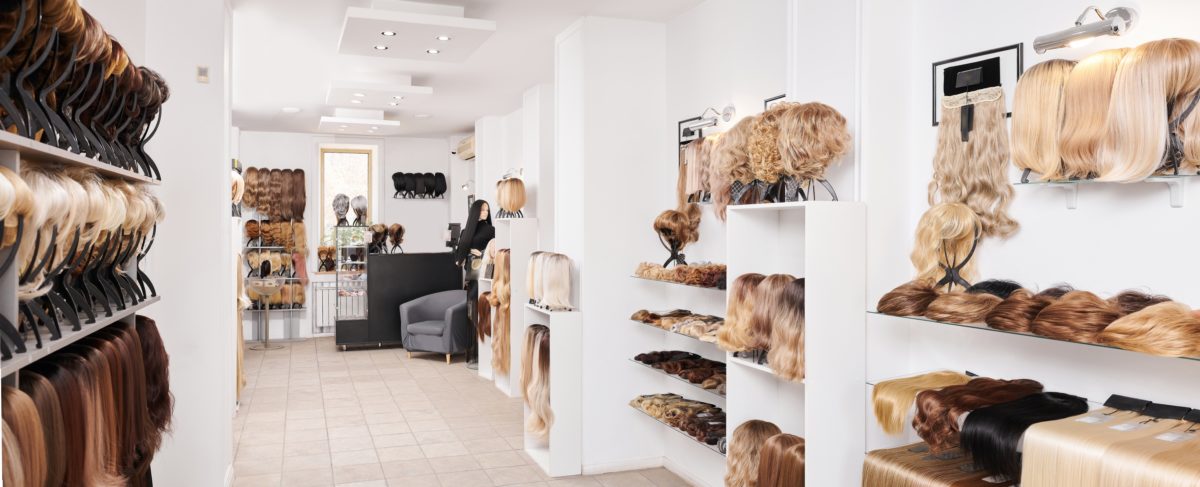
Some people will do whatever they can to avoid putting potentially harmful chemicals in their hair – and there’s nothing wrong with that. In fact, we applaud you for caring so deeply about your hair health.
If this sounds like you, then wigs and hair toppers can help conceal your gray hairs without chemicals.
Wigs. A wig covers the entire scalp, but it doesn’t have to result in an entirely new hairstyle. If you want, you can always wear a wig that resembles your natural hairstyle – just without the unwanted gray hairs.
Hair Toppers. Also known as hairpieces and/or wiglets, hair toppers are designed to cover only part of the scalp. They’re ideal when targeting specific areas where hair might be thinning, graying, or changing.
Both wigs and hair toppers can be made of human hair or synthetic hair. While human hair requires more maintenance and upkeep, it also offers more styling flexibility and a more natural overall appearance.
1. Home Remedies
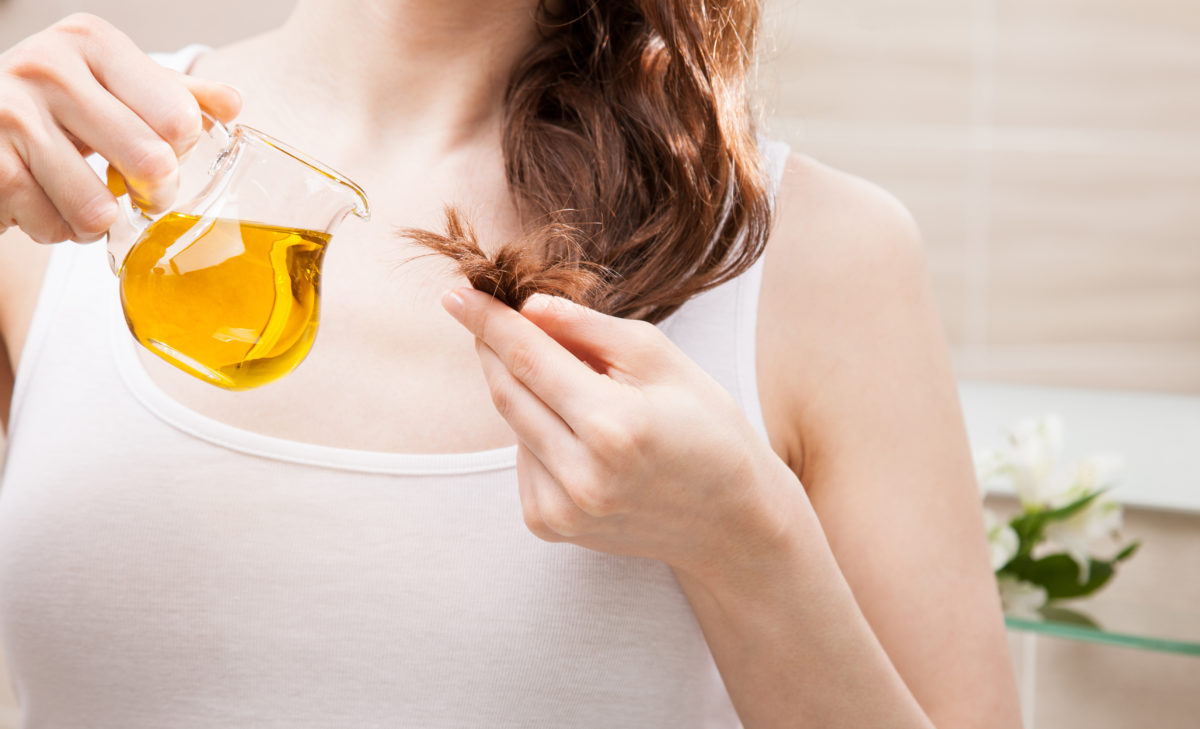
For those looking to avoid commercial hair dyes or who prefer natural methods, there are several home remedies that can help mask premature graying of hair. They won’t work for everyone, but they will for some.
Here are some of the most popular home remedies:
Amla. Also known as Indian gooseberry, Amla is a natural astringent that helps retain hair color. You can make an Amla paste by smashing the fruits and taking the seeds out – then apply the paste to your hair.
Coconut Oil and Lemon Juice. Mix two parts of coconut oil and one part lemon juice. The coconut oil contains biotin and moisture, which can help improve blood circulation when massaged into the scalp.
Curry Leaves. Boil the curry leaves in coconut oil until charred. Strain the mixture before massaging it into your hair, and always rinse it out after 30-45 minutes. You can repeat this at least twice per week.
These natural remedies can be effective for subtly reducing the appearance of gray hair, although they require consistency over time to see noticeable results. Just don’t expect it to be a perfect solution.
Embracing the Gray: Tips for Going Gray in Style
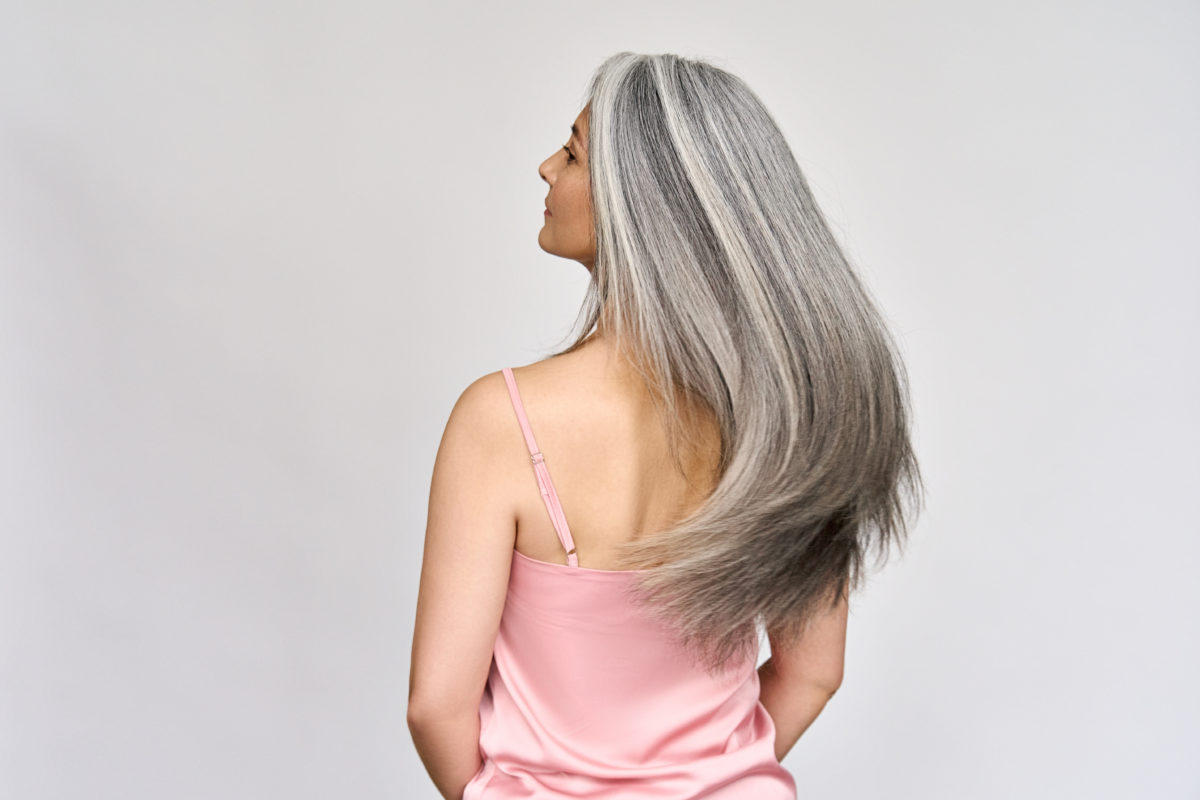
While some people choose to mask or hide the gray hairs, others choose to embrace their evolving look.
“I’m 39, and learned to embrace it a few years ago,” said one of our mama experts in our online forum. “Stopped dying it cold-turkey and this is what I ended up with about 2 years later. Gray is beautiful!”
“It’s your inner sparkle shining through,” someone else wrote.
Gray hair might not be high on everyone’s list, but some people like the way they look with gray hair and want to make the most of this new chapter in their lives. As long as you’re happy, that’s all that matters!
With that said, let’s take a look at five of our most prominent tips for those who want to go gray in style.
5. Change Your Hairstyle for a New Look
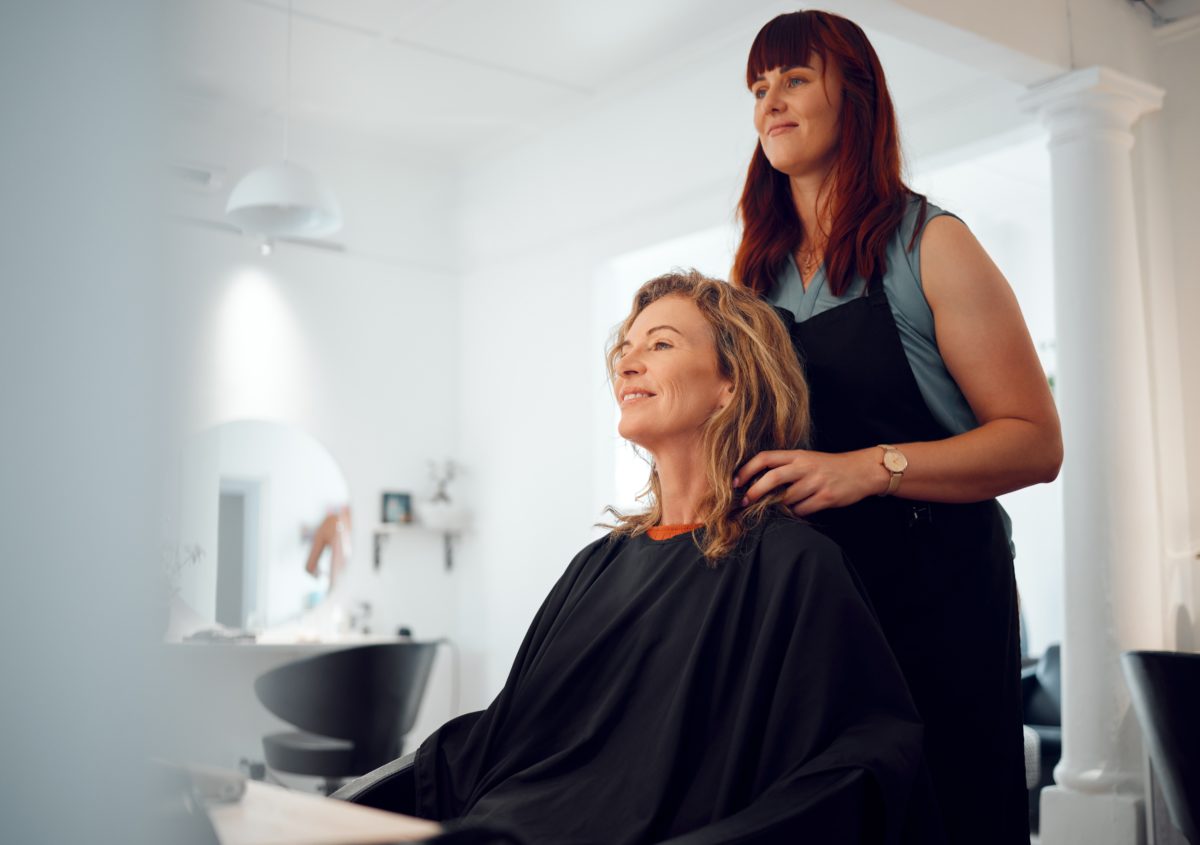
A new hairstyle can not only refresh your look but also enhance the natural beauty of your graying hair, making it a feature to be proud of rather than something to hide behind – that’s what we want, isn’t it?!
And we’re not just talking about cutting your hair – though that’s a popular option among PGH victims. You can also add layers to hair, change the way you part your hair, or increase the volume of your hair.
If you’re unsure about how to change your hairstyle to better appreciate your gray hair, consulting with a professional stylist can provide personalized advice that has been updated through years of experience.
4. Use Toning Shampoo to Prevent Yellowing

Gray or silver hair can sometimes develop a yellow hue due to various factors such as environmental pollutants, smoke, chlorine, and the buildup of products, as well as natural keratin found in the hair.
This yellowish tint is one of the downfalls of having gray hair, but there are ways to avoid it.
Toning shampoos, often referred to as purple shampoos, contain purple or blue pigments that neutralize yellow and brassy tones in the hair. This technique is rooted in color theory – where purple is directly across from yellow on the color wheel. You can apply these shampoos once a week, or as needed.
Regular use of a toning shampoo can help maintain a clean, bright, and silver look – making gray hair appear more vibrant and well-maintained. This can make you feel more comfortable in your own skin.
3. Take a Stronger Interest in Proper Hair Care

Embracing the transition from natural hair color to premature graying of hair also requires a transition in hair care and hair products, especially since maintaining gray hair is different from maintaining natural hair.
If you plan on keeping your gray hair, we suggest investing in shampoos and conditioners designed exclusively for gray hair. Moisturizers can also help reduce dryness and improve the texture of your hair.
“Some people experience a texture change when going gray, so a hair care regimen that is more moisturizing or smoothing can alleviate some of the dryness or wiry texture that gray can have,” Cody Moorefield – an experienced freelance hairstylist and colorist based in New York City – explains.
It’s important to recognize that gray hair is often more fragile than natural hair, so gentle styling is crucial. Avoid overusing heat tools and harsh chemical treatments, and opt for natural drying when possible. If you do style it, make sure you use heat protectant sprays and choose softer, less damaging hair products.
2. Cut Your Hair Often & Keep It Short
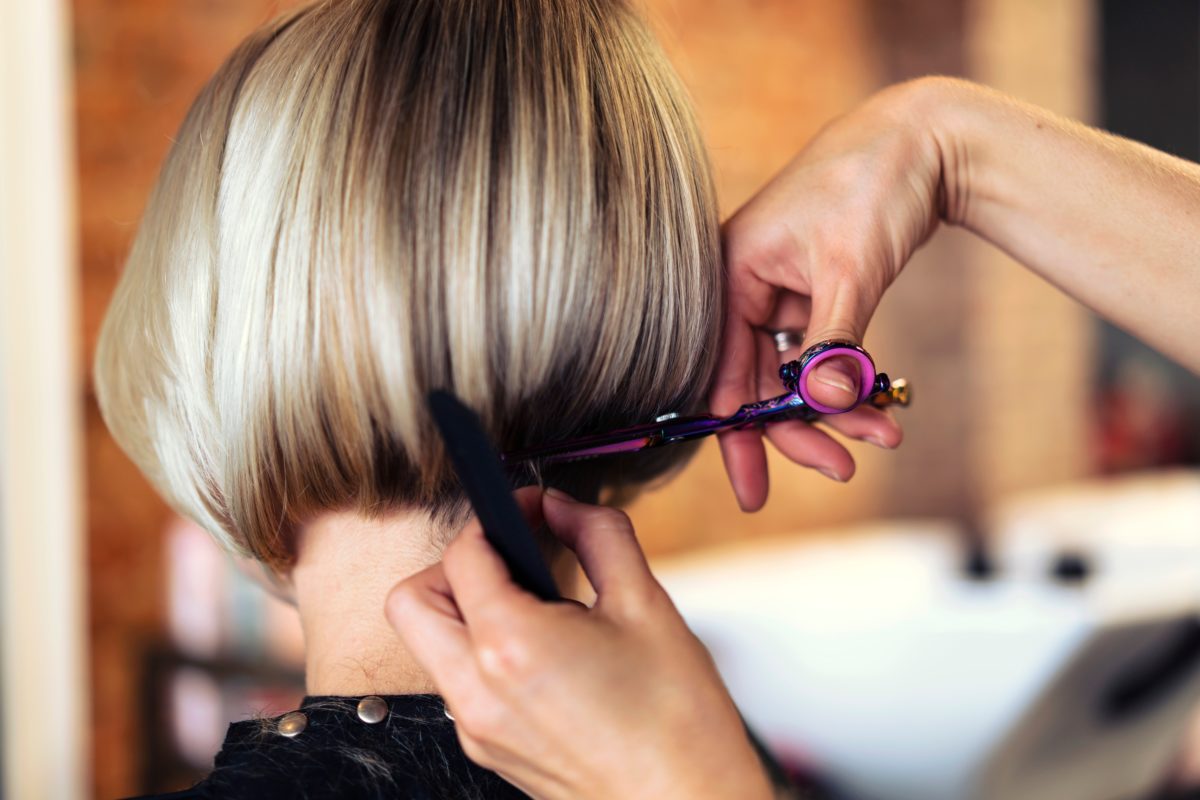
Whether you’re embracing your natural silver, transitioning to gray for the first time, or simply looking for a chic new look to turn heads, cutting your hair short and often can help enhance the beauty of gray hair.
Some of the most popular short hairstyles for those with gray hair include a pixie cut, classic bob, buzz cut, and a layered crop. Soft shags, curly tapered cuts, and spikey hairstyles are also popular today.
Short hairstyles can be styled to create more volume and texture, which can help distract from the grays and focus attention on the hairstyle itself. It also blends the grays nicely and is easier to maintain.
1. Boost Confidence With a Professional Photoshoot
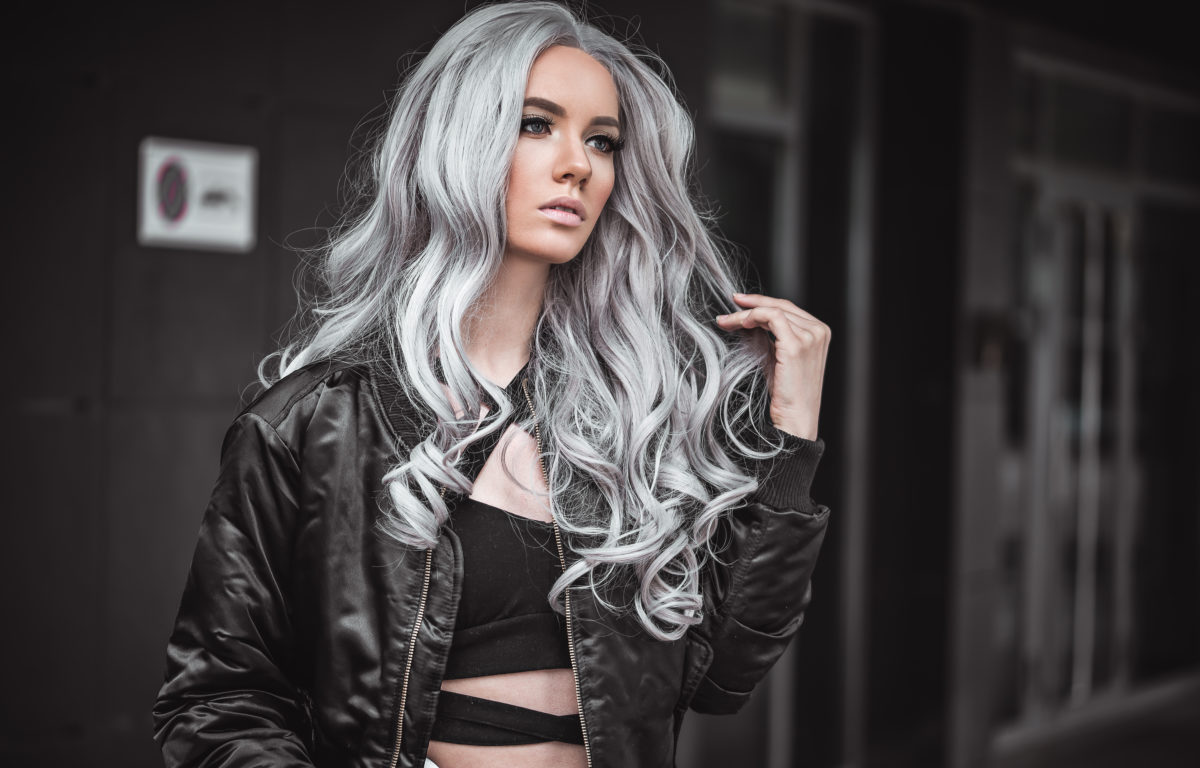
If you don’t want to say goodbye to your gray hair but are struggling to feel confident with your new look, try hiring a professional photographer for a quick photoshoot. Trust us, there’s no better way to introduce your social media followers to your new haircut – and will give you that boost of confidence you needed.
A photoshoot allows you to see yourself as others might see you, but in a more polished and styled manner. This can be a refreshing perspective, especially if you usually see yourself casually or only in selfies. It’s a chance to present yourself in the best possible way, which can increase self-esteem.
Do Whatever Makes You Happy & Comfortable
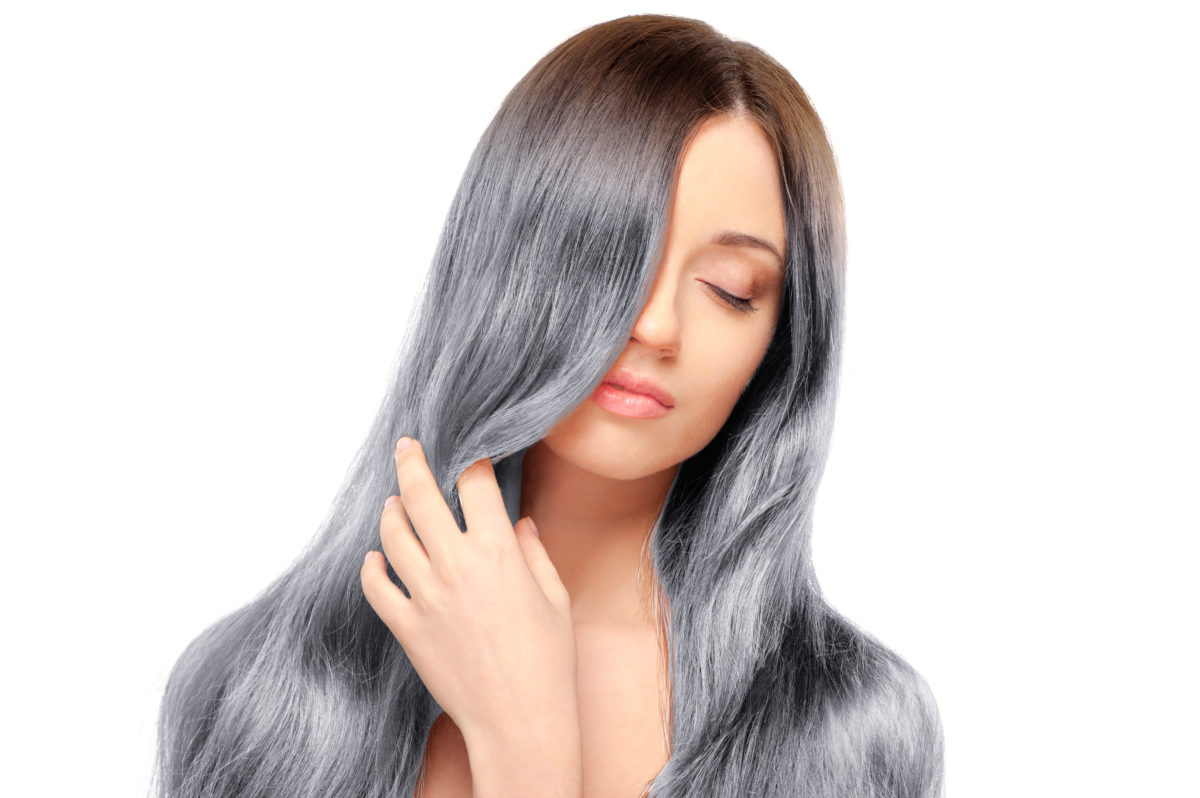
Many people fear the day they wake up with gray hair, but others learn to accept and embrace it. What’s most important is that you do what makes you happy – do what makes you feel comfortable with yourself.
But the point is this – gray hair doesn’t diminish your vibrancy or vitality.
In fact, it can be a sign of wisdom and maturity that many find distinguished and appealing. And in the event you don’t like it or want to go a different route, it’s as easy as consulting with a hair specialist.
YOU MAY ALSO LIKE: 45 Beautiful Short Haircuts for Women Who Want a Change
If you’re a mother seeking guidance, support, validation, or simply a place to share your experiences as a parent, be sure to explore our online forum, Answers by Mamas Uncut. Here, you can connect with a vibrant community of mothers who offer real, practical advice based on their own journeys as mothers.
Mamas Uncut is THE online place for moms. We cover the latest about motherhood, parenting, and entertainment as well – all with a mom-focused twist. So if you're looking for parenting advice from real parents, we have plenty of it, all for moms from moms, and also experts. Because, at the end of the day, our mission is focused solely on empowering moms and moms-to-be with the knowledge and answers they’re looking for in one safe space.
